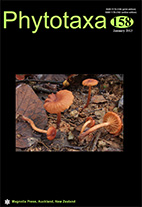Abstract
During floristic surveys in the southwestern borders of the Hissar Mountains (Pamir-Alai system, Central Asia), 2011–2013, we collected one unidentified species from genus Iris Linnaeus (1753: 38) subgenus Scorpiris, section Juno (Trattinnick 1817: 135) Bentham ex Bentham & Hooker (1883: 687). These plants were introduced into the Tashkent Botanical Garden, where we carefully studied them in the Iris living collection. We conclude that the new species is related to an alliance that contains Iris parvula (Vvedensky 1963: 425) Hall & Seisums (2011: 300). This group consists primarily of high-mountain species, the distribution of which is limited to the ridges of the Pamir-Alai and western Tien-Shan (Central Asia)—Iris parvula, I. linifolia (Regel 1935: 152) Fedtschenko (1905: 159), I. tadshikorum (Vvedensky 1935: 152) Vvedensky (1935: 563) and I. narynensis Fedtschenko (1905: 159; Ikinci et al., 2011). According to our studies, this group could be extended by the inclusion of Iris vvedenskyi Nevski (1932: 323) and Juno linifoliiformis Khalkuziev (1985: 1663), here transferred to Iris. Iris vvedenskyi is primarily documented for the Kugi-Tang Range (western Pamir-Alai), and its main distribution is in Turkmenistan. The lesser-known I. linifoliiformis grows on northern slopes of the Turkestan and Alai Ridges (Khalkuziev, 1985). The world checklist of selected plant families (2013) placed J. linifoliiformis in synonymy with I. linifolia. Vvedensky (1971), in the note to Iris linifolia, wrote that plants from the Alai Ridge differ from I. linifolia and should be recognized as a new species, between typical I. linifolia and northern forms of I. tadshikorum Vved. Later, a researcher of the flora of Alai Ridge, Khalkuziev (1985), described these plants as Juno linifoliiformis Khalkusiev (1985: 1663) and distinguished them from I. linifolia by their deeply dissected (1.5–2.0 mm long) crests and narrower leaves not exceeding flowers.

